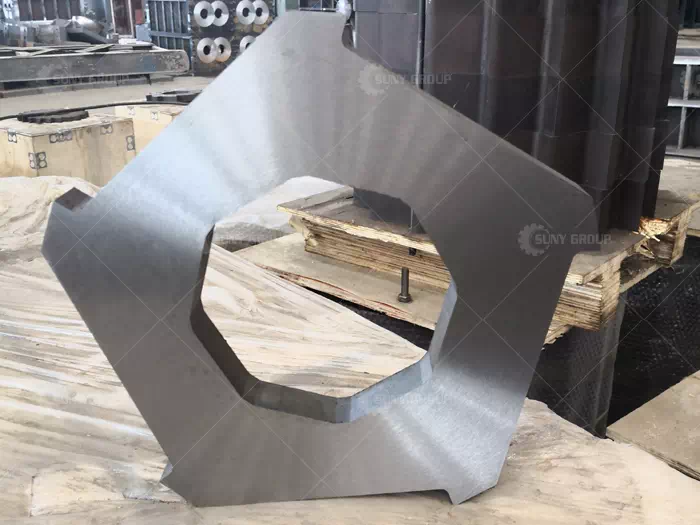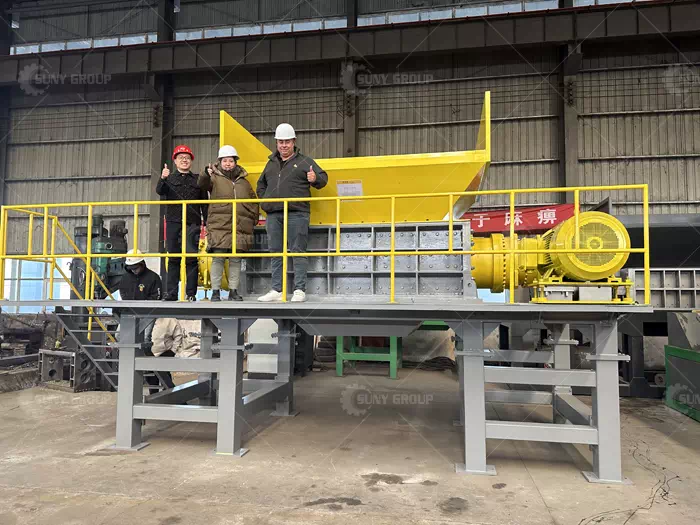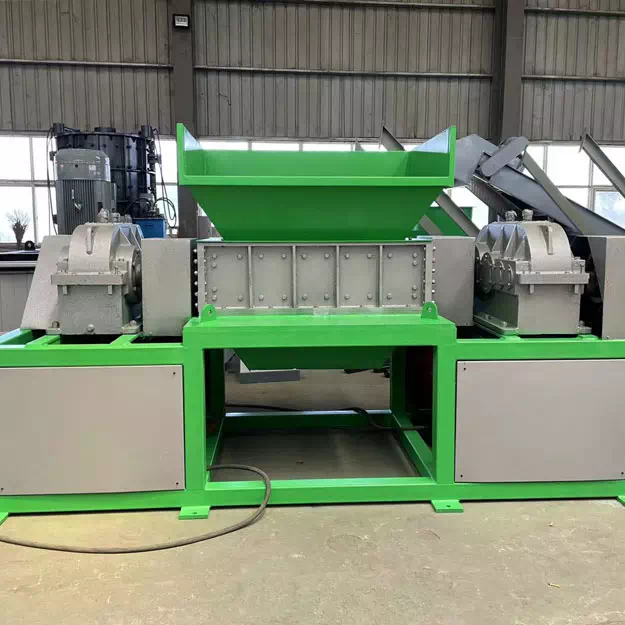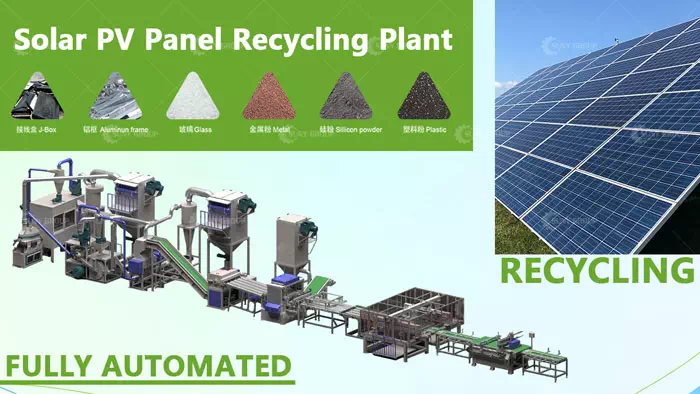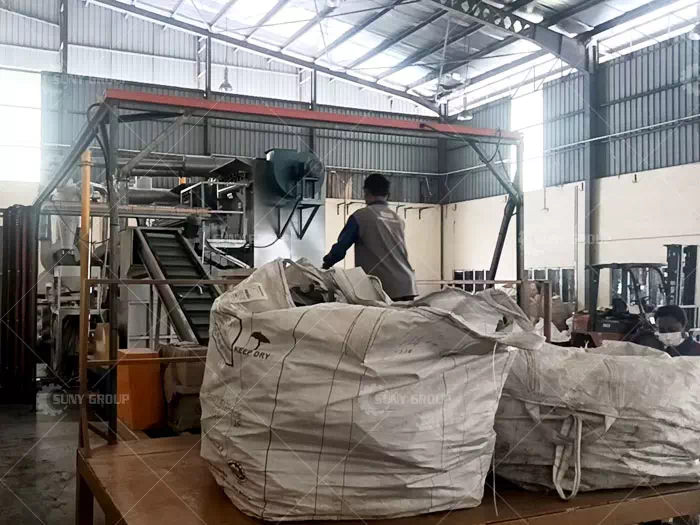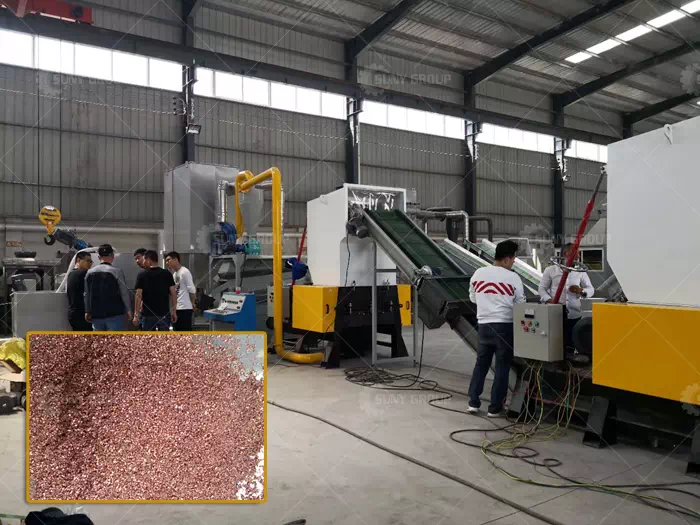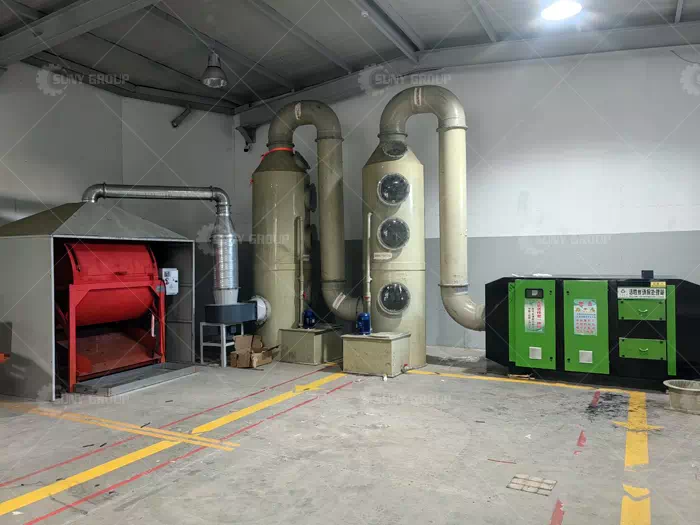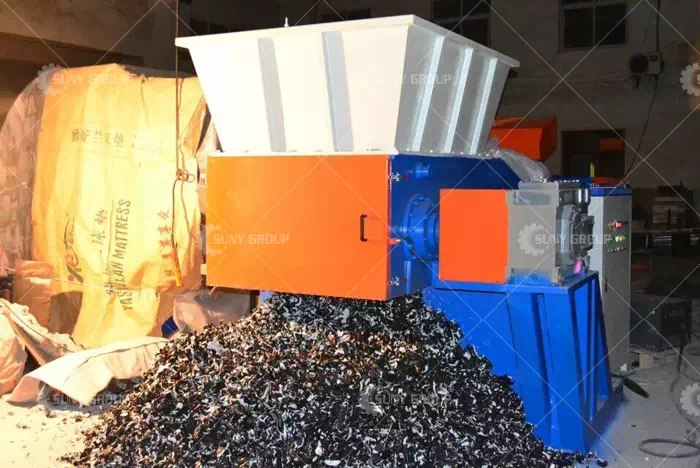With the rapid development of solar photovoltaic power generation, a large number of photovoltaic panels are gradually entering the end-of-life stage, how to effectively recycle the valuable resources in these panels has become an important issue in front of the photovoltaic industry. automated solar panel disassembly equipment line researched and developed by SUNY GROUP came into being, which provides a highly efficient and environmentally friendly solution for photovoltaic recycling and reuse.
The automated solar PV panel dismantling equipment line is mainly composed of the following equipment:
Feeder: feeds waste PV panels into the dismantling line.
Dismantling machine: to dismantle the aluminum frame, power box, glass, and other materials.
Crusher and milling machine: crushes PV panels into small pieces and grinds them.
Sorting machine: Separate the glass, aluminum frame, battery cells, and other materials in the PV panels.
Cleaning machine: clean the separated glass, aluminum frame, battery, and other materials.
Dryer: Dry the cleaned materials.
Classifier: Classify the silicon wafers, wires, and other materials in the cell.
Conveyor: Convey the separated, cleaned, dried, and graded materials to the corresponding storage containers.

Automated Solar Panel Disassembly Recycling Equipment Line
The working principle of the automated solar PV panel dismantling equipment line is as follows:
Feeding: Waste PV panels enter the dismantling line through the feeding machine.
Dismantling: Through the automatic dismantling and separating machine, the aluminum frame, power box, and glass of solar panels can be effectively removed.
Crushing: The crusher crushes the PV panels into powder, which is convenient for the subsequent separation operation.
Separation: The separator uses physical methods, such as vibration, screening, magnetic force, etc., to separate the glass, aluminum frame, battery cells, and other materials in the photovoltaic panels.
Cleaning: The washing machine uses water, chemical cleaning agents, etc., to clean the separated glass, aluminum frame, battery cells, and other materials to remove surface dirt and impurities.
Drying: The dryer removes water from the cleaned materials by drying them with hot air or vacuum.
Grading: The grading machine grades the silicon wafers, wires, and other materials in the cells, classifying them according to size, quality, and other indicators.
Conveying: The conveyor conveys the separated, cleaned, dried, and graded materials to the corresponding storage containers.
The automated solar PV panel dismantling equipment line has the following advantages:
High efficiency: Automated dismantling equipment can run continuously with high efficiency, which can greatly improve the dismantling speed of PV panels.
Good environmental protection: automated dismantling equipment can effectively reduce manual operation and reduce pollution to the environment.
High recovery rate: automated dismantling equipment can maximize the recovery of valuable resources in the PV panels and improve the recovery rate.
Low cost: automated dismantling equipment can reduce labor costs and improve production efficiency.
With the rapid development of the photovoltaic industry, automated solar PV panel dismantling equipment line will usher in broader application prospects. Automated solar photovoltaic panel dismantling equipment line is an important technical means of photovoltaic recycling and reuse, with high efficiency, good environmental protection, high recycling rate, low cost, and other advantages, if you need, or are interested in welcome to contact us at any time to consult.




